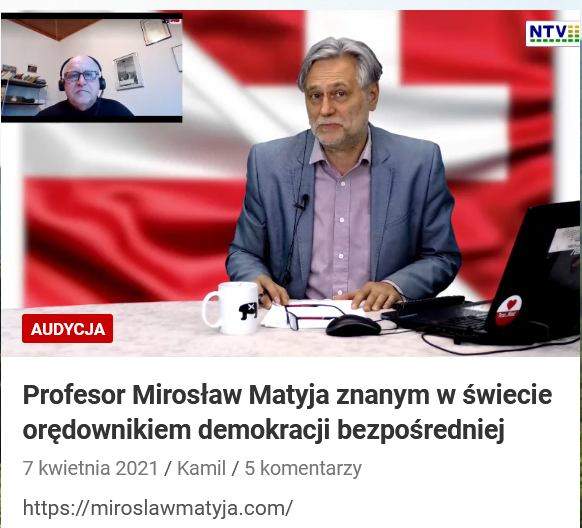Legal Protection against Children of Criminal Acts of Narcotics Abuse Is Sent In Prison (Case Study Decision Number 12/Pid.Sus.anak/2017/PN Dps)
Abstract
The phenomenon of juvenile delinquency in Indonesia is increasing, especially in terms of narcotics abuse which is an extraordinary crime, so that it is threatened with a fairly heavy crime. But on the other hand, perpetrators who are still children have the right to the principle of the best interests of children. So it can be said that the imposition of imprisonment on children does not provide a sense of protection to children, besides that children are victims of narcotics abuse as stipulated in Article 67 of Law no. 35 of 2014 concerning Child Protection. The problems in this study are (1) what is the judge's consideration in imposing a prison sentence on children who are perpetrators of narcotics crimes in Decision Number 12/Pid.Sus.Anak/2017/PN.Dps? seta (2) How is the provision of criminal sanctions in prison for children who are perpetrators of criminal acts of narcotics abuse according to the principles of juvenile criminal justice in Decision Number 12/Pid.Sus.Anak/2017/PN.Dps? This research is a normative juridical research so that what is studied are legal principles and legal rules that are still valid but are also supported by empirical data so that what is studied is data originating from the literature and court decisions. In imposing a prison sentence on a child who is a narcotics criminal in Decision Number 12/Pid.Sus.Anak/2017/PN.Dps, the judge is of the view that a child who is a drug abuser for himself is also a perpetrator of a crime/crime, so he must also still sentenced, therefore the judge's consideration in making a decision only affects the length of imprisonment, not a reason that affects the type of sanction given. Where the perpetrators who are still at the age of children are only used as mitigating things in terms of the length of imprisonment. Based on this, it can be seen that the child perpetrators of narcotics abusers in this case are still treated as mere criminals, regardless of the child as a victim. (2) The provision of imprisonment for children who are perpetrators of criminal acts of narcotics abuse according to the principle of juvenile criminal justice in Decision Number 12/Pid.Sus.Anak/2017/PN.Dps is deemed inappropriate, because the type of narcotic crime is included in a crime without victims. (crime without victim) which means that children as perpetrators here are victims, so that the imposition of criminal sanctions on children as narcotics abusers can have a negative impact on children in society such as dehumanization and stigmatization.
Keywords
Full Text:
PDFReferences
Agung Wahyono and Siti Rahayu. (1993). Overview of Juvenile Justice in Indonesia, Sinar Graphic, Jakarta.
Arif Gosita. (1994). Child Protection Issues, Jakarta: Academia.
Barda Nawawi Arif. (1998). Some Aspects of Law Enforcement Policy and Criminal Law Development, Citra Aditya Bakti, Bandung.
Bismar Siregar et al. (1996). Law and the Rights of the Child, Rajawali. Jakarta.
Darwan Prinst. (2003). Indonesian Children's Law, Citra Aditya Bakti, Bandung.
Gatot Supramono. (2000). Juvenile Court Procedural Law, Djambatan, Jakarta.
https://bnn.go.id/usage-narkotika-among-remaja-meningkat/, accessed on February 8, 2020
https://pn-karanganyar.go.id/main/index.php/about-court/kepaniteraan/kepaniteraan-pidana/715-Effort- Hukum-Pidana
Joko Sriwidodo. (2019). Study of Indonesian Criminal Law, Theory and Practice, Yogyakarta, Kepel Press.
Kartini Kartono. (1992). Social Pathology 2 Juvenile Delinquency, Jakarta: Rajawali Pers.
Koesno Adi. (2015). Child Narcotics Crime Diversion, Setara Press, Malang.
___________. (2009). Criminal Policy in Revolving Narcotics Crime by Children, Malang: UMM Press.
Maidin Gultom. (2014). Legal Protection of Children in the Juvenile Criminal Justice System in Indonesia, Bandung: Refika Aditama.
Muladi and Barda Nawawi. (1992). Anthology of Criminal Law, Bandung, Alumni.
___________. (1995). Capita Selecta of the Criminal Justice System, Semarang: UNDIP/.
Mulyana W. Kusumah, Law and Human Rights, a Critical Understanding, Bandung: Alumni, 1981.
Ni Made Kusuma Wardhani and I Gusti Ngurah Wairocana, 2018, Legal Protection for Children Perpetrators of Criminal Acts with the Threat of Imprisonment for Seven Years or More, Kertha Wicara, Vol. 07, No. 03, ojs.unud.ac.id, URL : https://ojs.unud.ac.id/index.php/kerthawicara/article/view/40888
Sajipto Rahardjo. (1993). Law and Social Change, Bandung: Alumni.
Sudikno Mertokusumo. (1996). knowing the Law is an Introduction, Yogyakarta: Liberty.
Supramonon Gatot. (2000). Juvenile Court Procedural Law, Djambatan, Jakarta.
Teguh Prasetyo and Abdul Halim Barkatullah. (2012) Philosophy, Theory and Legal Studies, Jakarta Rajawali Press.
Wagiati Soetodjo. (2008). Child Criminal Law (Second Printing), PT. Refika Aditama, Bandung.
Indonesia, 1945 Constitution Amendment
______________, the Criminal Code.
______________, the Criminal Procedure Code.
______________, Law Number 11 of 2012 concerning the Juvenile Criminal Justice
______________, Law Number 35 of 2014 concerning Amendments to Law No. 23 of 2002 concerning Child Protection
______________, Law Number35 of 2009 concerning Narcotics
______________, Law No. 48 of 2009 concerning Judicial Power.
______________, Denpasar District Court Decision Number 12/Pid.Sus.Anak/2017/PN.Dps
DOI: https://doi.org/10.33258/birci.v5i1.4267
Article Metrics
Abstract view : 40 timesPDF - 20 times
Refbacks
- There are currently no refbacks.

This work is licensed under a Creative Commons Attribution-ShareAlike 4.0 International License.

This work is licensed under a Creative Commons Attribution-ShareAlike 4.0 International License.

_.gif)

















_.gif)



